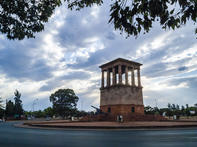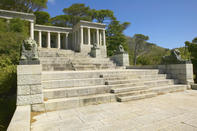South Africa's Most Famous Architect
Herbert Baker, South Africa’s most famous architect, cut his teeth at the Cape round the turn of the previous century. During his relatively brief stay – just two decades, 1892–1913 in South Africa, he changed the course of our heritage.

Perhaps most importantly, he recognised that Cape Dutch was one of the world’s truly great vernaculars, and incorporated its elements into his own designs. What’s more he established architecture as an art and as a profession at the Cape, organising men and materials to interpret his personal vocabulary.
Thriving in the Western Cape

Herbert Baker’s most bold design statement is probably the Union Buildings in Pretoria, but it was in the Western Cape as a young firebrand architect newly arrived from England, that he made his mark. There he perfected a style, marrying elements of the Arts and Crafts movement with Dutch design.
Under the patronage of Cecil Rhodes, who initially asked him to renovate his home, Groote Schuur, Baker received a number of important commissions and began to thrive in Cape Town. Having grown up among fine examples of vernacular architecture in Kent, and given his interest in the Craft Revival, Baker was immediately taken with traditional Cape architecture.
He wrote about “the dignity and beauty of the old homesteads that had been built by Dutch and Huguenot settlers: dignified in the ordered layout of house, outbuildings, avenues, orchards and vineyards; beautiful in the simplicity of the architecture, white walls, solid teak or green-painted shuttered windows and doors, gracefully curved gables with softly moulded enrichments.” These became the hallmarks of his own Cape style.